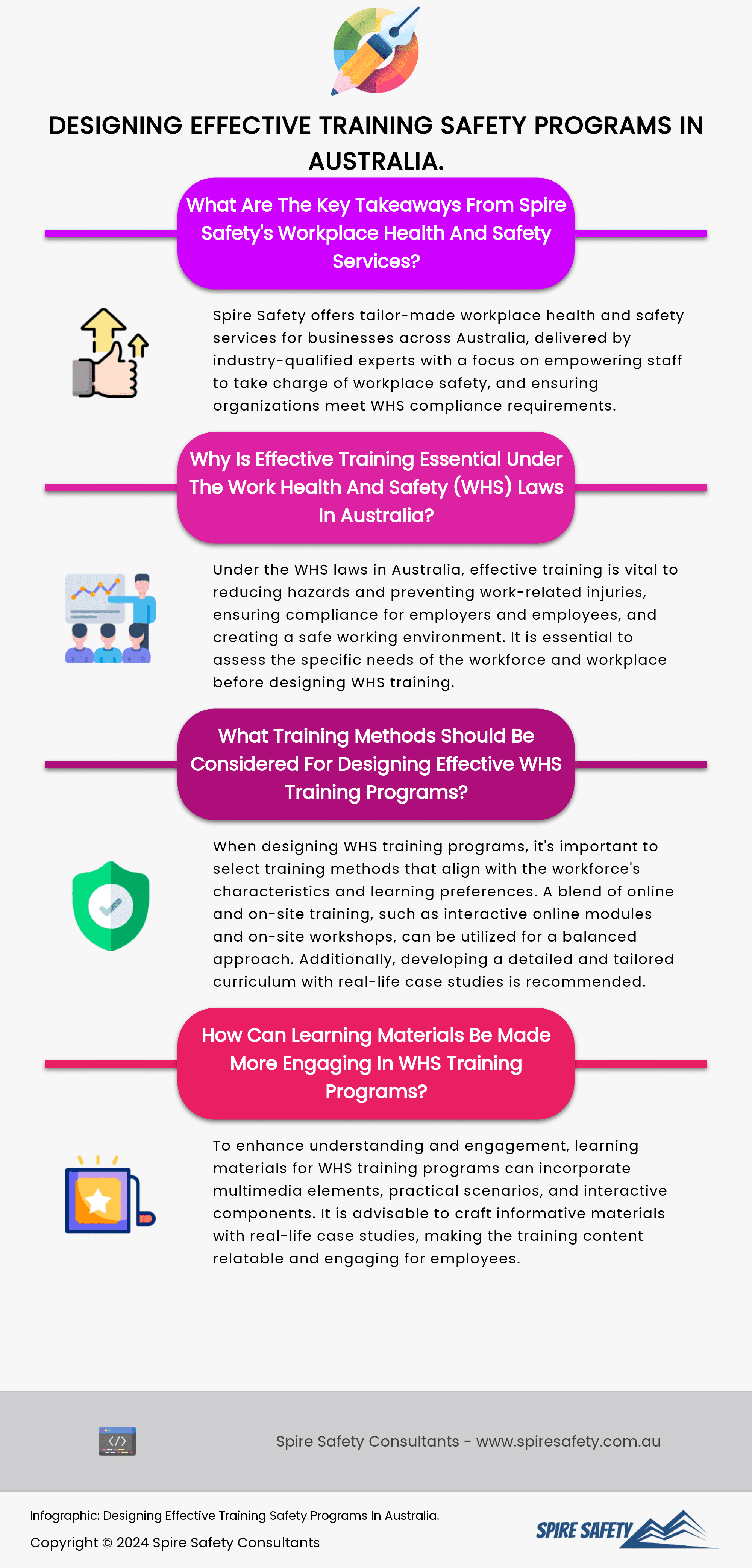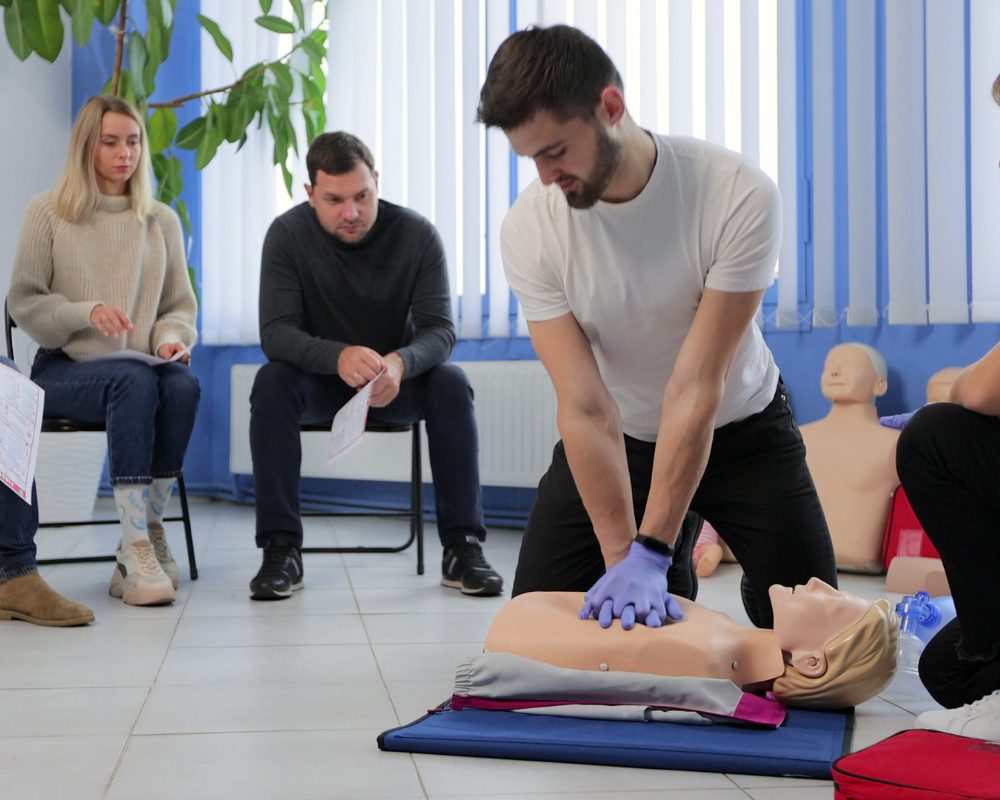Designing Effective Training Safety Programs In Australia: A Comprehensive Guide
Introduction
Welcome to our comprehensive guide on designing effective training safety programs in Australia.
Whether you’re an individual seeking insights or an organization aiming to enhance workplace safety, this article provides valuable information on creating impactful Work Health and Safety (WHS) training.
Key Takeaways:
- Designing WHS training is crucial for ensuring workplace safety in Australia.
- Effective programs contribute to reducing hazards, preventing injuries, and fostering a culture of safety.
- WHS training encompasses various types, including induction, refresher, toolbox talks, and industry-specific training.

Why Designing WHS Training Matters?
Work Health and Safety (WHS) laws in Australia aim to reduce hazards and prevent work-related injuries. Effective training is essential for both employers and employees to ensure compliance and create a safe working environment.
Key Points:
- WHS training protects worker safety, improves productivity, and reduces business costs.
- Different types of WHS training cater to diverse needs, including industry-specific requirements.
Components of Effective Training Programs
1. Conducting Needs Assessment
Before designing WHS training, it’s crucial to assess the specific needs of your workforce and workplace. Identify potential hazards, risks, and areas requiring improvement.
Tip: Leverage online tools and resources for comprehensive needs assessments.
2. Choosing Suitable Training Methods
Select training methods that align with your workforce’s characteristics and learning preferences. Consider a blend of online and on-site training for flexibility.
Example: Utilize interactive online modules and on-site workshops for a balanced approach.
3. Creating a Training Program
Develop a detailed training program outlining the curriculum, objectives, and assessment methods. Tailor the content to address industry-specific challenges.
Actionable Tip: Include real-life case studies to make the training more relatable and engaging.
4. Developing Learning Content
Craft engaging and informative learning materials. Incorporate multimedia elements, practical scenarios, and interactive elements to enhance understanding.
Advice: Regularly update content to reflect the latest safety standards and regulations.
5. Delivering the Training
Ensure effective delivery through experienced trainers. Consider virtual classrooms and on-site workshops for accessibility.
6. Measuring Training Results
Implement assessment tools and feedback mechanisms to measure the effectiveness of the training. Use metrics to identify areas for improvement.
Example Metric: Measure the percentage of employees demonstrating improved safety practices post-training.
FAQ Section
Q: How often should WHS training be conducted?
A: Regular refresher training is recommended, with the frequency depending on industry requirements and regulatory changes.
Q: Is online WHS training effective?
A: Yes, online training offers flexibility and cost-effectiveness.
Advice & Actionable Tips
Designing effective WHS training requires a strategic approach. Consider the following tips:
- Stay Informed: Keep abreast of WHS regulations and industry updates to ensure training remains current.
- Engage Employees: Foster a culture of safety by involving employees in the design and feedback processes.
- Continuous Improvement: Regularly assess and update training programs to align with evolving safety standards.
- Utilize Industry Expertise: Collaborate with organizations offering industry-specific training solutions.
Conclusion
In conclusion, designing effective training safety programs in Australia is paramount for ensuring workplace well-being. By incorporating best practices, staying informed, and embracing innovative training methods, organizations can create a safer and more productive work environment.
Article Sources & Further Reading
-
- Spire Safety Consultants – Essential safe work practices for Australian businesses.








